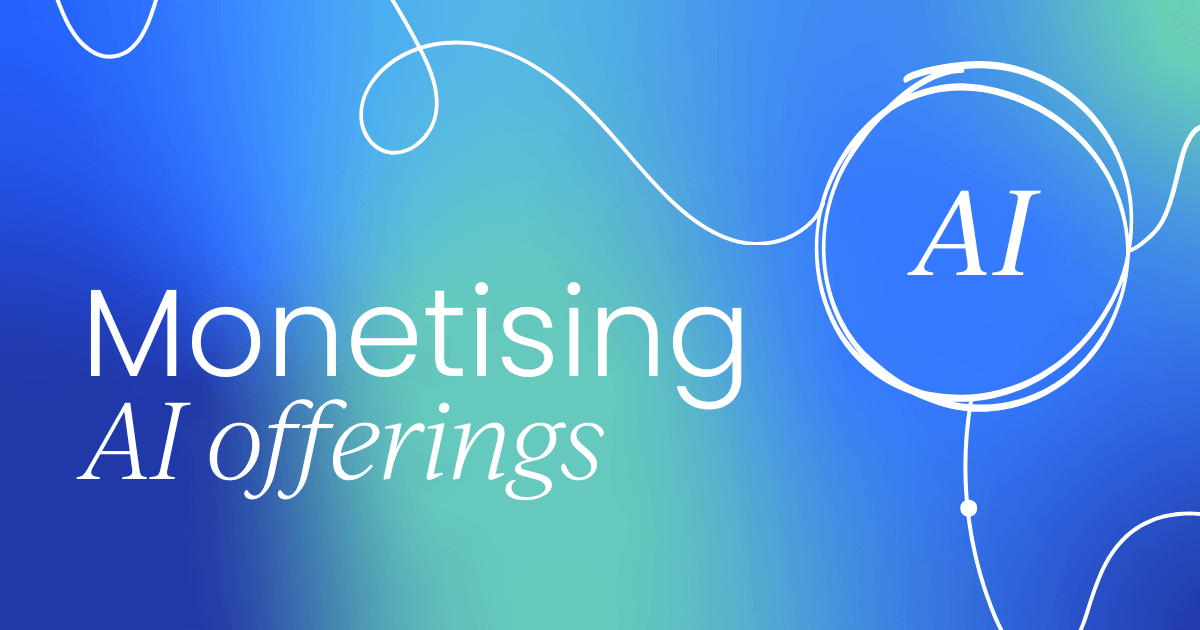Monetizing generative AI requires a delicate balance of innovation, flexibility, and customer focus.
I'm Michael Mansard, Principal Director of Subscription Strategy at Zuoraa, and over the past decade, I’ve worked with hundreds of companies to launch and optimize recurring revenue models.
My experience spans everything from SaaS to AI-driven businesses, giving me unique insights into the challenges and opportunities of monetizing emerging technologies like generative AI.
In this article, I’ll explore practical strategies for positioning and pricing AI offerings, share data-driven benchmarks, and discuss the transformative potential of new monetization models that align with customer value and market demands.
The state of AI in business
To set the stage, ask yourself these questions:
- Is AI part of your strategic product roadmap?
- Have you built any AI capabilities yet?
- Have you launched an AI-driven product to even one client?
- Are you monetizing your AI offerings—generating tangible revenue?
- Finally, does AI contribute to more than 10% of your revenue?
If you’ve progressed through these steps and reached the final question, you’re in a unique position. For most businesses, monetizing AI is a work in progress, with significant opportunities still untapped.
In this article, I’ll focus on two critical areas:
- Understanding hybrid monetization models: These are increasingly relevant as businesses blend subscription, consumption, and other models to better align with customer needs.
- Monetizing generative AI: Drawing from legitimate research and case studies, I’ll share benchmarks and insights from seven companies leading the way in generative AI.
But before diving into the specifics of AI, let’s take a brief detour into the world of hybrid monetization models. These models lay the foundation for many of the strategies we’ll discuss, and understanding them is key to unlocking the full potential of AI offerings.
The challenges of moving from free to fee
In the world of product-led sales and product-led growth, companies excel at helping potential customers discover their solutions.
Freemium models, free trials, and even reverse free trials—where users test the full paid version—are great tools for showcasing value. However, a recurring challenge I’ve observed is the steep transition from "free" to "fee."
When customers are asked to start paying, the step often feels too large. Companies typically offer two or three options, such as monthly or annual plans, but these can be expensive and inflexible for users who aren’t ready to commit. This hesitancy isn’t surprising, given changing consumer and business behaviors.
The shift in consumer expectations
Over the past five to ten years, we’ve seen a significant shift, particularly among younger generations. People increasingly prioritize access over ownership, a trend that spans industries.
Add economic factors like inflation or financial instability, and even those willing to commit often find they simply can’t.
Consider some data from recent studies:
- 80% of consumers (B2C) want more flexibility in how they consume, preferring more plans, pricing metrics, or levels of commitment.
- 45% of UK consumers prefer pay-per-use models over traditional subscriptions.
- B2B buyers also show a preference for usage-based or hybrid models over rigid commitments, particularly in software and services.
Failing to address this shift means leaving significant revenue on the table.



 Follow us on LinkedIn
Follow us on LinkedIn



